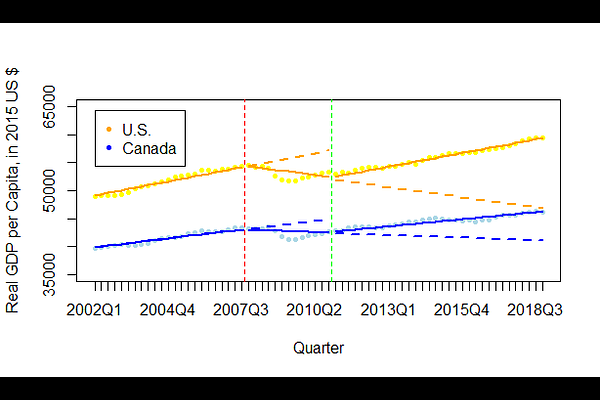The Federal Reserve's Response to the Global Financial Crisis and Its Long-Term Impact: An Interrupted Time-Series Natural Experimental Analysis

The Federal Reserve's Response to the Global Financial Crisis and Its Long-Term Impact: An Interrupted Time-Series Natural Experimental Analysis
Arnaud Cedric Kamkoum
AbstractThis paper examines the monetary policies the Federal Reserve implemented in response to the Global Financial Crisis. More specifically, it analyzes the Federal Reserve's quantitative easing (QE) programs, liquidity facilities, and forward guidance operations conducted from 2007 to 2018. The essay's detailed examination of these policies culminates in an interrupted time-series (ITS) analysis of the long-term causal effects of the QE programs on U.S. inflation and real GDP. The results of this formal design-based natural experimental approach show that the QE operations positively affected U.S. real GDP but did not significantly impact U.S. inflation. Specifically, it is found that, for the 2011Q2-2018Q4 post-QE period, real GDP per capita in the U.S. increased by an average of 231 dollars per quarter relative to how it would have changed had the QE programs not been conducted. Moreover, the results show that, in 2018Q4, ten years after the beginning of the QE programs, real GDP per capita in the U.S. was 14% higher relative to what it would have been during that quarter had there not been the QE programs. These findings contradict Williamson's (2017) informal natural experimental evidence and confirm the conclusions of VARs and new Keynesian DSGE models that the Federal Reserve's QE policies positively affected U.S. real GDP. The results suggest that the current U.S. and worldwide high inflation rates are likely not because of the QE programs implemented in response to the financial crisis that accompanied the COVID-19 pandemic. They are likely due to the unprecedentedly large fiscal stimulus packages used, the peculiar nature of the financial downturn itself, the negative supply shocks from the war in Ukraine, or a combination of these factors. This paper is the first study to measure the macroeconomic effects of QE using a design-based natural experimental approach.